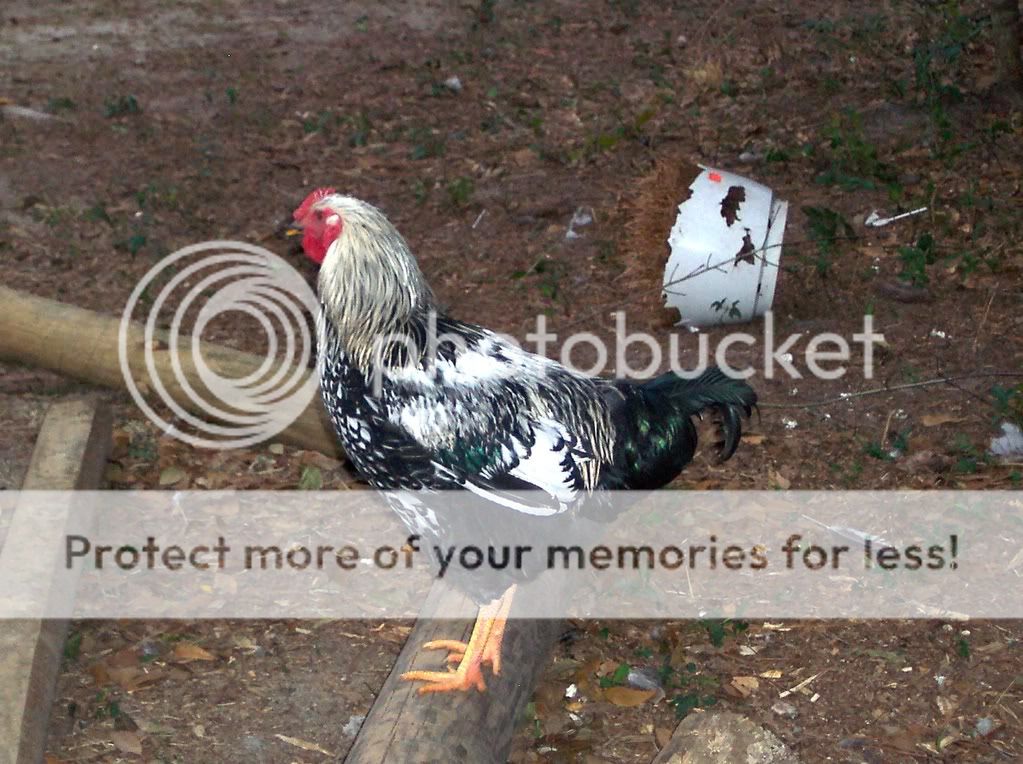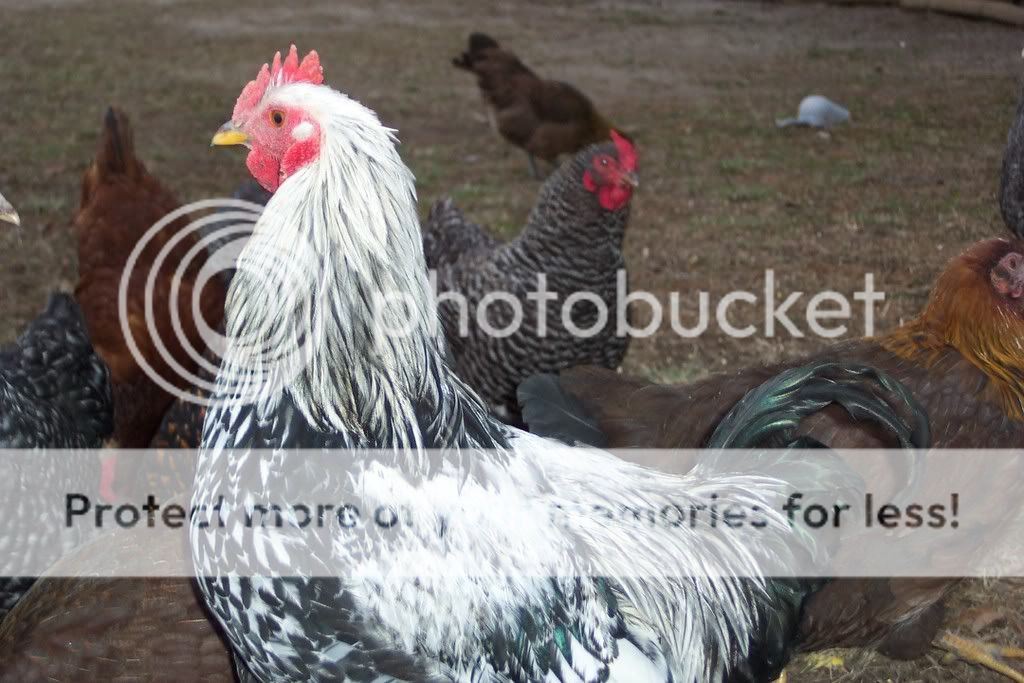- Jan 13, 2008
- 125
- 6
- 131
I have 4 roosters that I am trying to rehome, but I still am not sure what they are. My guess is that they are Silver Laced Wyandottes, but 2 of the 4 have rose combs and the other 2 have single combs. All have yellow legs. The feathering colors are almost exact, but something tells me that these are 2 different breeds.
What do you all think?


What do you all think?







